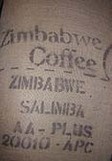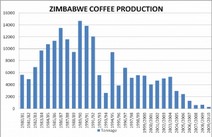Main menu:
Zimbabwe
Introduction |
|||||
Flag: |
|
||||
Card: |
|||||
Background: |
The UK annexed Southern Rhodesia from the South Africa Company in 1923. A 1961 constitution was formulated to keep whites in power. In 1965 the government unilaterally declared its independence, but the UK did not recognize the act and demanded voting rights for the black African majority in the country (then called Rhodesia). UN sanctions and a guerrilla uprising finally led to free elections in 1979 and independence (as Zimbabwe) in 1980. Robert MUGABE, the nation's first prime minister, has been the country's only ruler (as president since 1987) and has dominated the country's political system since independence. |
||||
Geography |
|||||
Location: |
Southern Africa, between South Africa and Zambia |
||||
Coordinates: |
20° 00' S, 30° 00' E |
||||
Map references: |
Africa |
||||
Area: |
total: 390,580 sq km |
||||
Land boundaries: |
total: 3,066 km |
||||
Coastline: |
0 km (landlocked) |
||||
Maritime claims: |
none (landlocked) |
||||
Climate: |
tropical; moderated by altitude; rainy season (November to March) |
||||
Terrain: |
mostly high plateau with higher central plateau (high veld); mountains in east |
||||
Elevation extremes: |
lowest point: junction of the Runde and Save rivers 162 m |
||||
Geography - note: |
Landlocked |
||||
People |
|||||
Population: |
11,365,366 |
||||
Note: |
estimates for this country explicitly take into account the effects of excess mortality due to AIDS; this can result in lower life expectancy, higher infant mortality and death rates, lower population and growth rates, and changes in the distribution of population by age and sex than would otherwise be expected (July 2001 est.) |
||||
Nationality: |
noun: Zimbabwean(s) |
||||
Ethnic groups: |
African 98% (Shona 71%, Ndebele 16%, other 11%), mixed and Asian 1%, white less than 1% |
||||
Religions: |
syncretic (part Christian, part indigenous beliefs) 50%, Christian 25%, indigenous beliefs 24%, Muslim and other 1% |
||||
Languages: |
English (official), Shona, Sindebele (the language of the Ndebele, sometimes called Ndebele), numerous but minor tribal dialects |
||||
Government |
|||||
Country name: |
conventional long form: Republic of Zimbabwe |
||||
Government type: |
parliamentary democracy |
||||
Capital: |
Harare |
||||
National holiday: |
Independence Day, 18 April (1980) |
||||
Constitution: |
21 December 1979 |
||||
Legal system: |
mixture of Roman-Dutch and English common law |
||||
Flag description: |
seven equal horizontal bands of green, yellow, red, black, red, yellow, and green with a white isosceles triangle edged in black with its base on the hoist side; a yellow Zimbabwe bird is superimposed on a red five-pointed star in the center of the triangle |
||||
Economy |
|||||
Economy - overview: |
The government of Zimbabwe faces a wide variety of difficult economic problems as it struggles to consolidate earlier moves to develop a market-oriented economy. Its involvement in the war in the Democratic Republic of the Congo, for example, has already drained hundreds of millions of dollars from the economy. Badly needed support from the IMF suffers delays in part because of the country's failure to meet budgetary goals. Inflation rose from an annual rate of 32% in 1998 to 59% in 1999 and 60% in 2000. The economy is being steadily weakened by excessive government deficits and AIDS; Zimbabwe has the highest rate of infection in the world. Per capita GDP, which is twice the average of the poorer sub-Saharan nations, will increase little if any in the near-term, and Zimbabwe will suffer continued frustrations in developing its agricultural and mineral resources. |
||||
Agriculture - products: |
corn, cotton, tobacco, wheat, coffee, sugarcane, peanuts; cattle, sheep, goats, pigs |
||||
Currency: |
Zimbabwean dollar (ZWD) |
||||
Currency code: |
ZWD |
||||
Transportation |
|||||
Railways: |
total: 2,759 km (1995) |
||||
Highways: |
total: 18,338 km |
||||
Waterways: |
the Mazoe and Zambezi rivers are used for transporting chrome ore from Harare to Mozambique |
||||
Ports and harbors: |
Binga, Kariba |
||||
Coffee |
|||||
Zimbabwe, formerly known as lower Rhodesia until independence in 1980. has produced great coffee since production was introduced in the 1960s. Like Zambians, these coffees are often overshadowed by the great East African coffee: Kenya. But they can have great balance, complexity, body and finesse. (But note that not all do! It sometimes takes some rigorous cupping to find truly great estate Zimbabwe as there is an abundance of lesser non-estate in US warehouses...) Coffee production is chiefly from the Manicaland and Mashonaland provinces along the border of Mozambique. Coffee production towns are Chipinga and Mutare. Top AA quality coffee is often marked "Code 53" on the bags, an enigmatic and perhaps arbitrary internal designation for best quality |
|||||
Zimbabwe Salimba AA+ |
|
||||
Region: |
Chipinga |
||||
Mark: |
Salimba |
||||
Appearance: |
0 d/300gr |
||||
Screen: |
18 |
||||
Processing: |
Wet processed |
||||
Notes: |
The best estate Zimbabwe coffees are prized for their balance in the cup ...which might sound like it is mild, but that is not the case. Balanced coffees are a "complete cup." They have all the desirable qualities. A really good Zimbabwe has moderate acidity, rich flavors, good body and aftertaste. The problem is, there are many coffee lots sold as generic Zimbabwe which theoretically can be good but in reality are often not. (part of this is the difficulty with shipping coffee from this land-locked nation. Coffee steaming in 100 degree weather in a metal shipping container for 6 weeks while waiting for pickup is not good for cup quality!) So simply being a Zimbabwe coffee is by no means enough. That said, there are the uncertain political environment affecting agriculture and commerce now, and so good coffee from Zimbabwe is hard to come by. But we found this Salimba sample, graded for bean size at AA+, and with all the good character expected of this origin. Theb aroma is both sweet and sharp, with a hint of the East African "wild" note in the coffee, in this case it is like an aromatic bark (wood that is, not canine). It develops excellent roast flavors at Full City, and has that smack of East African wildness, just a bit hidey, in the aftertaste. Alternating between slightly sweet-caramelly and bittersweet pungency, your choice of roast between City and Full City will accent different characters in this coffee. The numbers on the Salimba are a bit down from last years, but as this cup cools the character really emerges. If you chose a light roast interpretation, let the coffee rest a little longer before brewing - 24 hours at least. You can also make interesting straight espresso from the Salimba, although I am sure Mr. Illy will turn in his grave at the suggestion. |
||||
Roast: |
Medium to chesnut brown. |
||||
Compare to: |
Excellent complexity/depth and a unique origin flavors that shift greatly depending on roast... |
||||
|
|
||||
Growing-areas: |
In the east alongside Mozambique, Umtali, Jipinga |
||||
Qualities: |
washed Arabicas classified as per beansize and liquery |
||||
Harvest: |
October - April |
||||
Shippingperiod: |
November - May |
||||
Port of Export: |
Beira (Mozambique) Durban (Southafrica) |
||||
Shipment: |
in container in bags (320/300 bags of each 60.- kos net) |
||||
Production: |
118'000 bags |
||||
Export figures: |
111'195 bags |
||||
Caffeine content: |
1,10 % |
||||
















